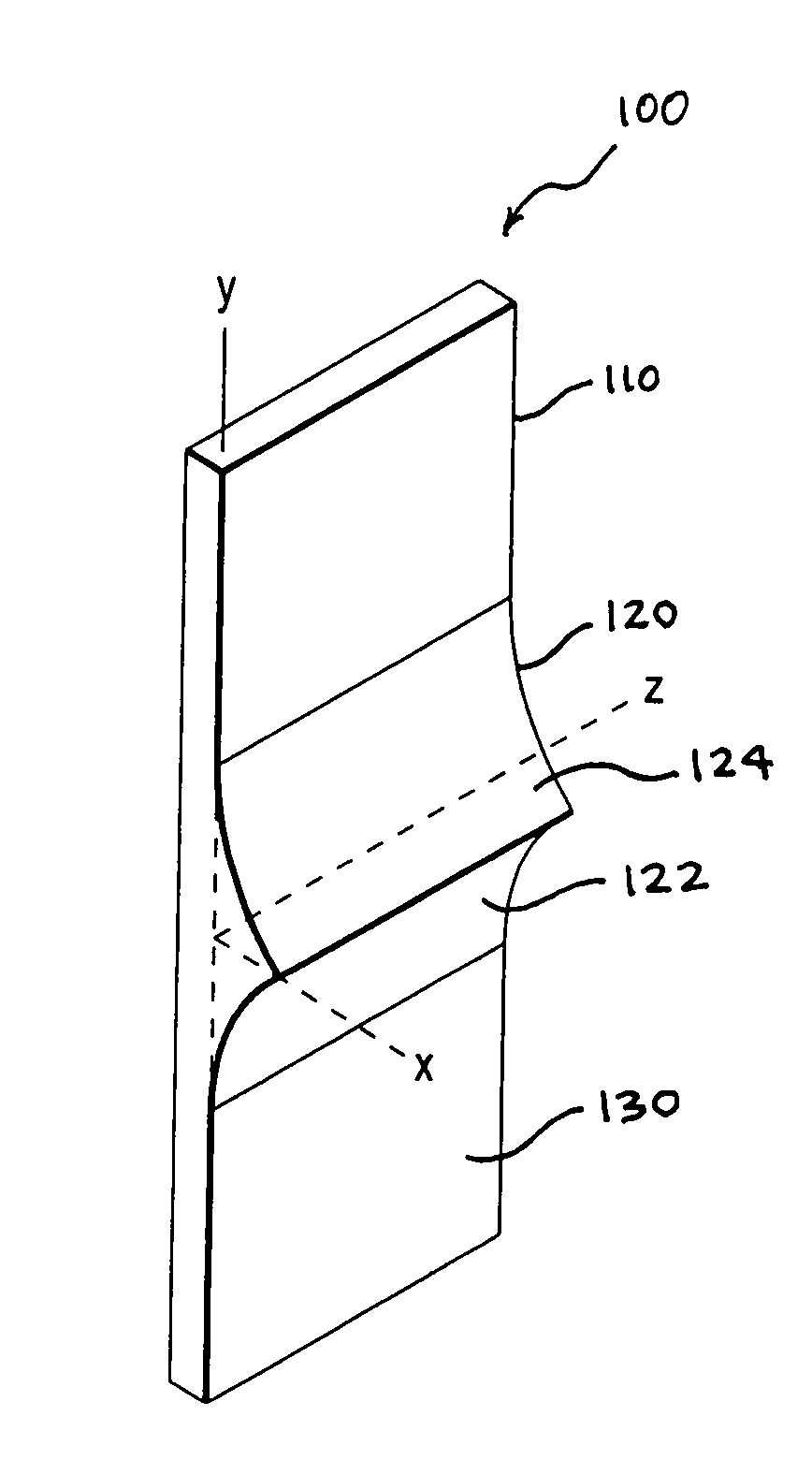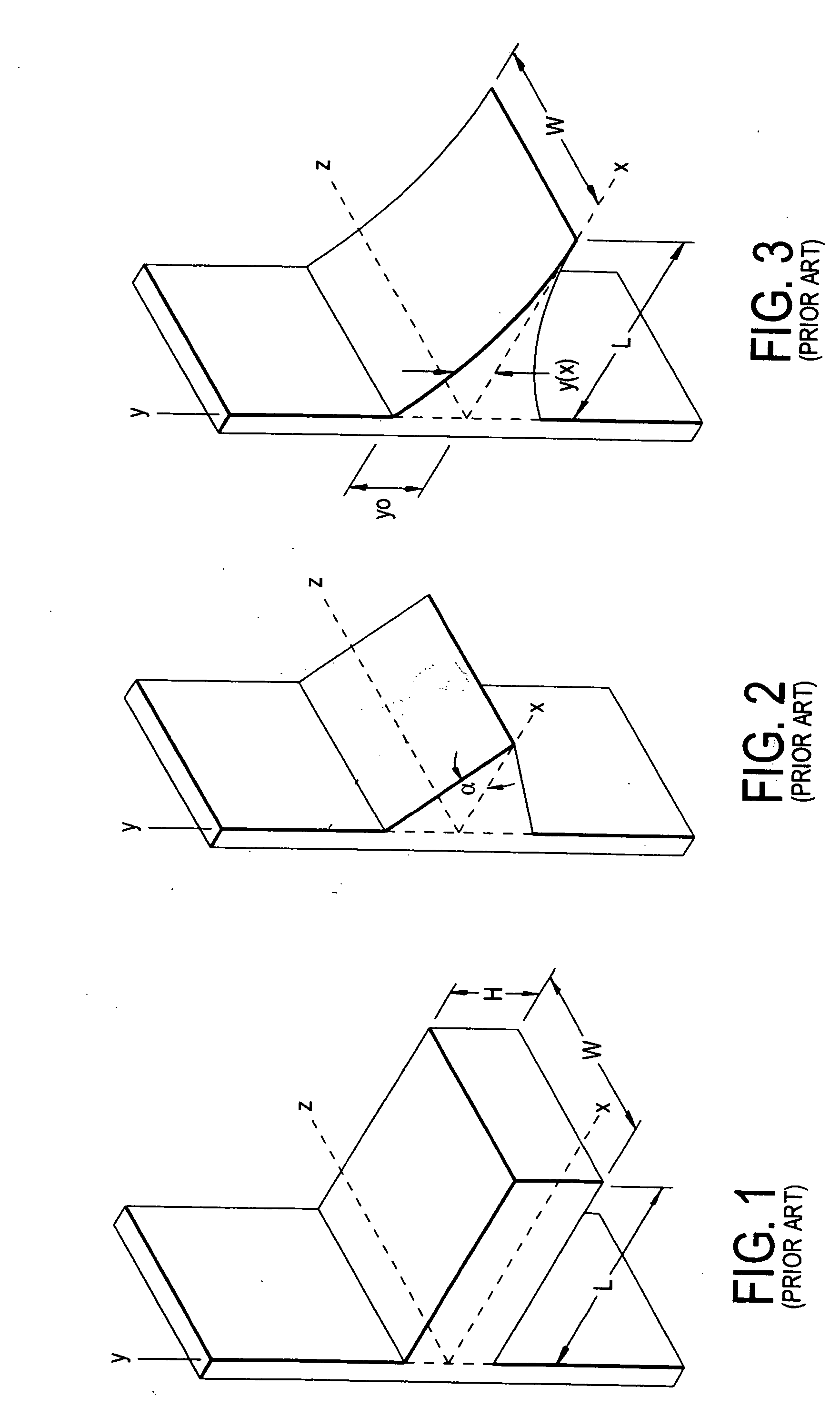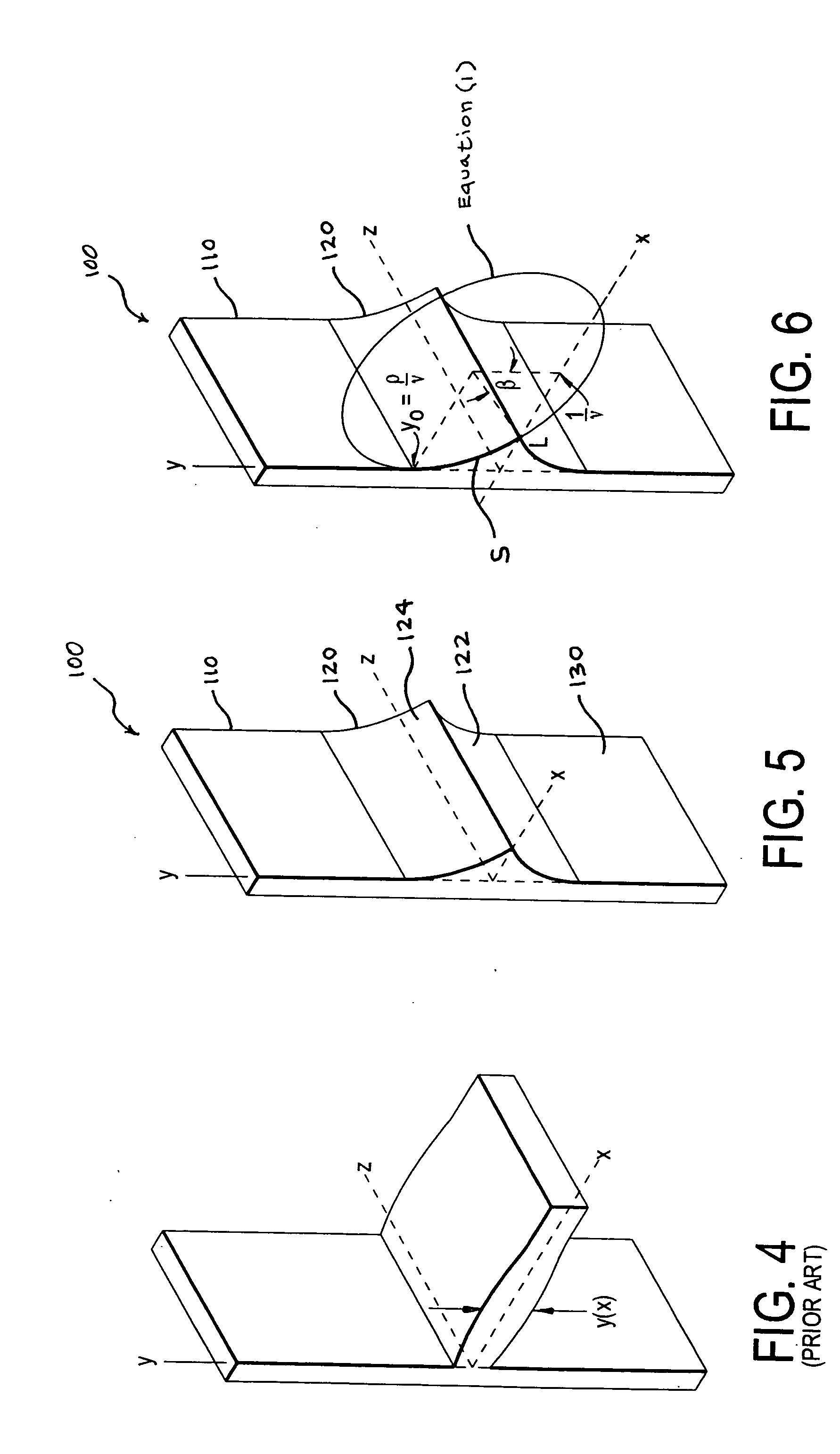Heat exchange device
- Summary
- Abstract
- Description
- Claims
- Application Information
AI Technical Summary
Benefits of technology
Problems solved by technology
Method used
Image
Examples
Embodiment Construction
[0035] In the present invention, one preferred embodiment is described for illustrative purposes, it being understood that other embodiments are also within the scope of the invention. Turning first to FIG. 5, there is shown a perspective view drawing of a heat exchange device 100 having a heat source 110 and an approximately circular-arc-shaped fin 120 attached thereto.
[0036] The heat source 110 represents a component of a system that, by conduction, convection or radiation mechanisms, receives waste thermal energy generated by the system. For example, the heat source 110 may be a printed circuit board that has embedded heat-generating transistor circuits. The heat source 110 may also be a metal plate that is heated by exposure to a radiation source. It could also be part of the wall of a heat exchange tube that encloses a high temperature fluid passing through the tube. In FIG. 5, the heat source 110 is shown with orthogonal dimensions defined by an x-y-z coordinate system for ea...
PUM
| Property | Measurement | Unit |
|---|---|---|
| Temperature | aaaaa | aaaaa |
| Width | aaaaa | aaaaa |
| Energy | aaaaa | aaaaa |
Abstract
Description
Claims
Application Information
 Login to View More
Login to View More - R&D
- Intellectual Property
- Life Sciences
- Materials
- Tech Scout
- Unparalleled Data Quality
- Higher Quality Content
- 60% Fewer Hallucinations
Browse by: Latest US Patents, China's latest patents, Technical Efficacy Thesaurus, Application Domain, Technology Topic, Popular Technical Reports.
© 2025 PatSnap. All rights reserved.Legal|Privacy policy|Modern Slavery Act Transparency Statement|Sitemap|About US| Contact US: help@patsnap.com



